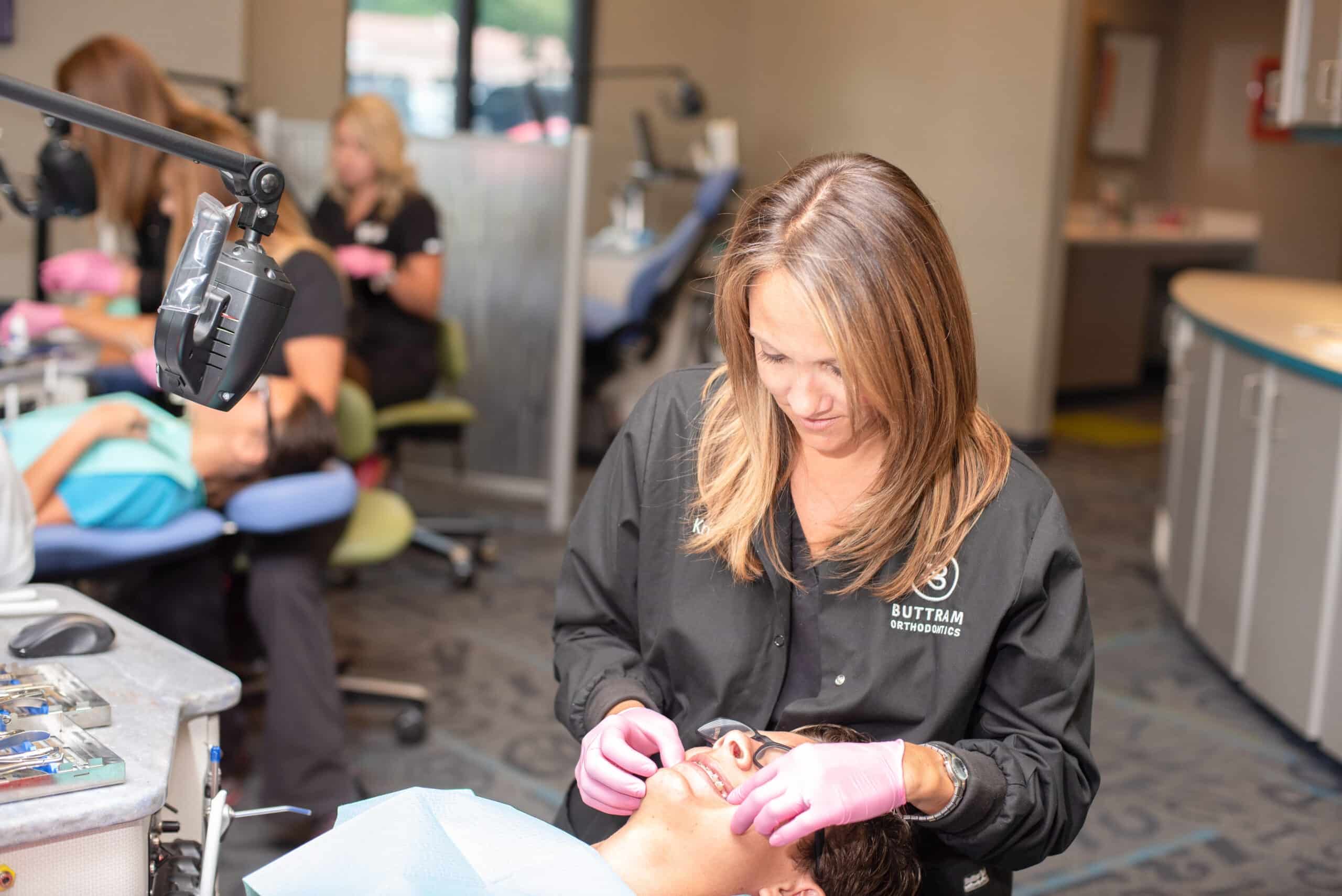The shape of your mouth plays an important role in your facial symmetry. A crossbite or narrow upper jaw can often lead to complicated, and often painful, oral health issues. Here at Buttram Orthodontics, our expert team can straighten your teeth and correct your jaw shape. We achieve this by using an orthodontic appliance called a palatal expander. This expander applies constant pressure to your jaw. Over time, it slowly widens the upper jaw. This allows permanent teeth to grow in and existing teeth to be adjusted appropriately! Let’s take a look at everything you need to know about palatal expanders.
Why Use a Palatal Expander?
Let’s begin with a simple anatomy lesson: Your upper jaw grows in two separate pieces as your mouth matures. It isn’t until you reach puberty that the two halves bind together to form a solid supporting structure. This means that our orthodontic team can use that permeability to give your teeth space to grow. We can also align your upper jaw with your lower jaw for the best alignment and bite.
Dr. Buttram makes custom palatal expanders from a digital scan of your upper jaw and teeth. We send your scan to a lab where the data is turned into a high-grade metal and acrylic appliance that we place on the molar teeth in the back of the mouth. The device consists of two halves that are connected in the center by a screw that you will be instructed to turn with a special key on a specified schedule. This process takes time as it keeps pressure on both halves of the jaw bone, causing them to widen as intended. This is usually left on for a specific amount of time after the desired results are achieved to allow time for the bone to get used to its new position.
Different Types of Palatal Expanders
There are several different types of palate expanders depending on the adjustments needed for your unique jaw. Some expanders are removable and some are fixed, but all palatal expanders are individualized to your palate shape and size. Let’s take a look at some of the options in orthodontic expanders.
Removable Palate Expander
If you need only minor jaw corrections, you may best benefit from a removable option. There are many brands, but in general, this appliance looks similar to a clear aligner tray with a screw in the center. This option will need to be worn twenty-four hours a day. However, it does not require a longer treatment time. Removable palatal expanders don’t always require daily screw tightening like permanent appliances.
Fixed Palate Expander
The fixed palate expander, also called the rapid palate expander (RPE), is a system of bands attached to corresponding back molars that connect high in the center of the roof of the mouth with a screw. Your orthodontist will give you a special key with instructions on how and when to use it to rotate the screw, maintaining adequate pressure for mouth expansion.

Who Needs a Palatal Expander?
Palatal expanders gradually expand the roof of your mouth and widen your upper jaw. Patients with many different types of problems can benefit from this specific orthodontic treatment. Malocclusions like an overbite can lead to complications like jaw and head pain, tooth decay, gum disease, and sleep apnea. Having a narrow jaw can affect tooth alignment, leading to impaction and broken teeth or even obstruction of permanent teeth that have yet to grow in. Both of these dental corrections can be made by utilizing a palatal expander.
Before you reach puberty, your bones are still growing and forming, which makes them softer than adult bones. This is also true for your jawbones. Why is this important? It means that this treatment is quicker and most effective when used on children before adult teeth are entirely in place.
Considerations and Alternatives
Palatal expanders require time, work, and effort. While they may sound a bit painful, it isn’t anything more than minor discomfort. Typically, that discomfort only lasts a few minutes after adjusting the screw. Just like with braces, palatal expanders may take some time to get used to as your tongue rests against the expander. This can make speaking, chewing, and swallowing a bit difficult. Chances are, you are the only one that notices, and you’ll get used to it in about a week.
Orthodontic treatment with a palatal expander can often cause space to form between your upper front two teeth. This is completely normal and the gap closes on its own, but braces might be an excellent option for some patients to maintain this change. You may experience some drooling, a lisp, or even some mild headaches during your treatment, especially after tightening the central screw.
There may be some instances where an alternative option to palatal expanders may be better. If this is the case, Dr. Buttram can recommend traditional braces, removal of impacted or overcrowded teeth, or even jaw surgery to correct the spacing in your jaw.

Trust your smile at Buttram Orthodontics
You deserve to trust your smile in the right hands, and we’re here to guide you every step of the way. Whether you’re just getting started on your orthodontic journey or looking for a new office to visit, Buttram Orthodontics is your location for modern orthodontic treatment. Dr. Buttram has been in the exclusive practice of orthodontics for over thirty years and is passionate about providing exceptional care to every patient who visits us.
Our office is conveniently located in Panama City, Florida, so your orthodontic care is always close to home, school, or work. We encourage you to reach out for your FREE consultation with our expert team at Buttram Orthodontics to get started on your personalized journey to a healthy and happy smile.


